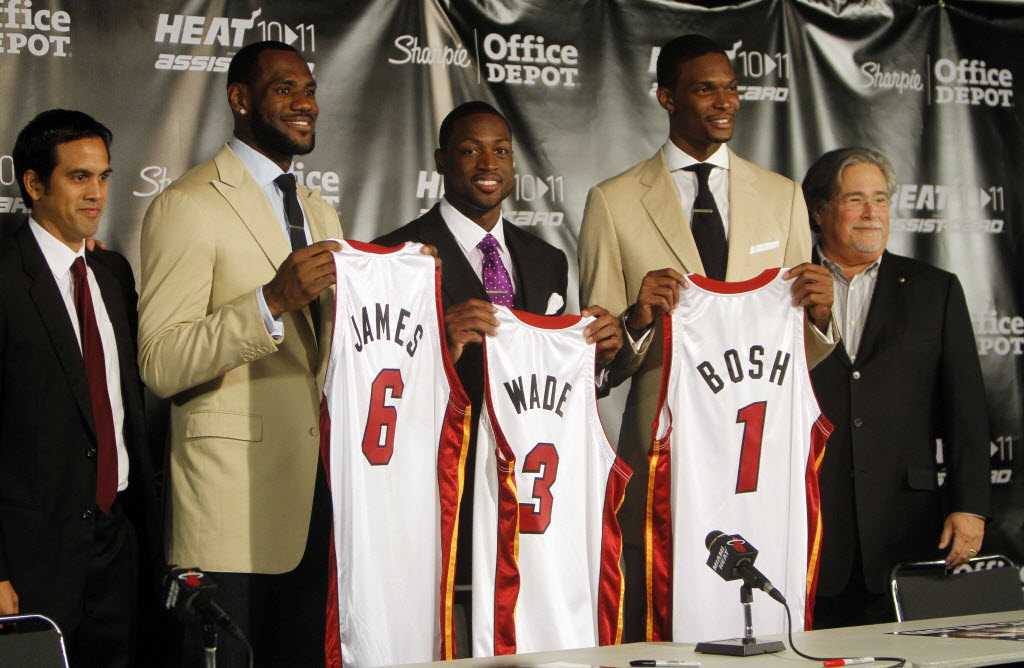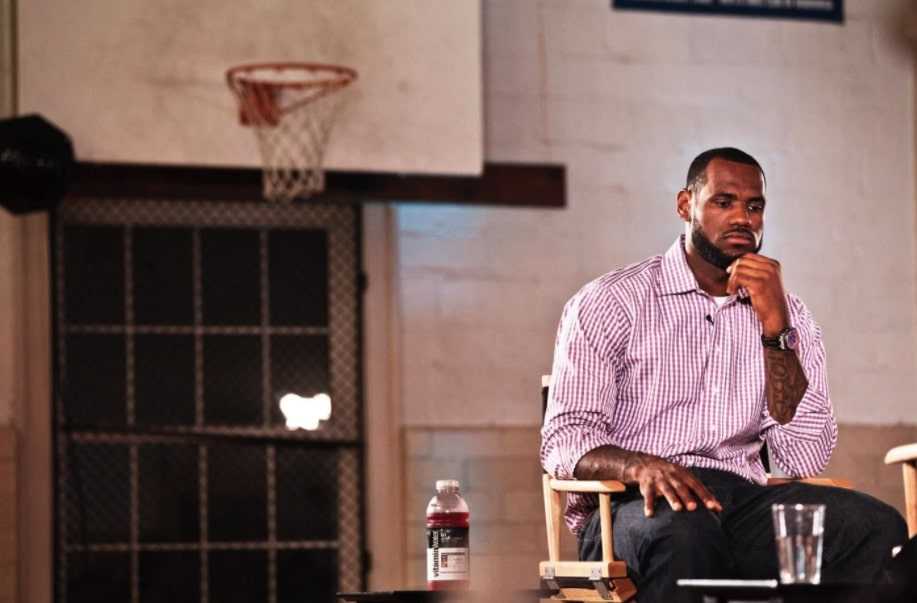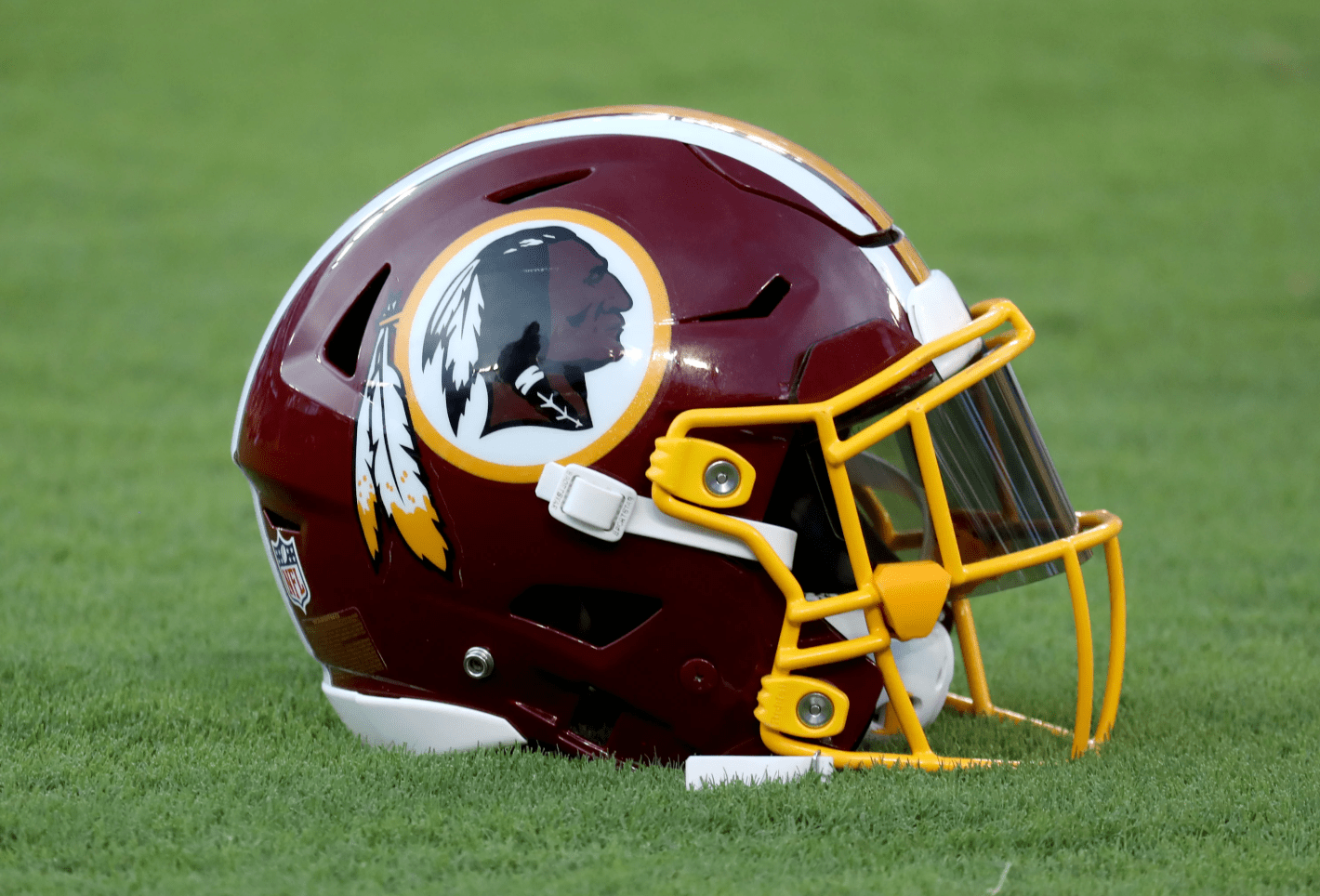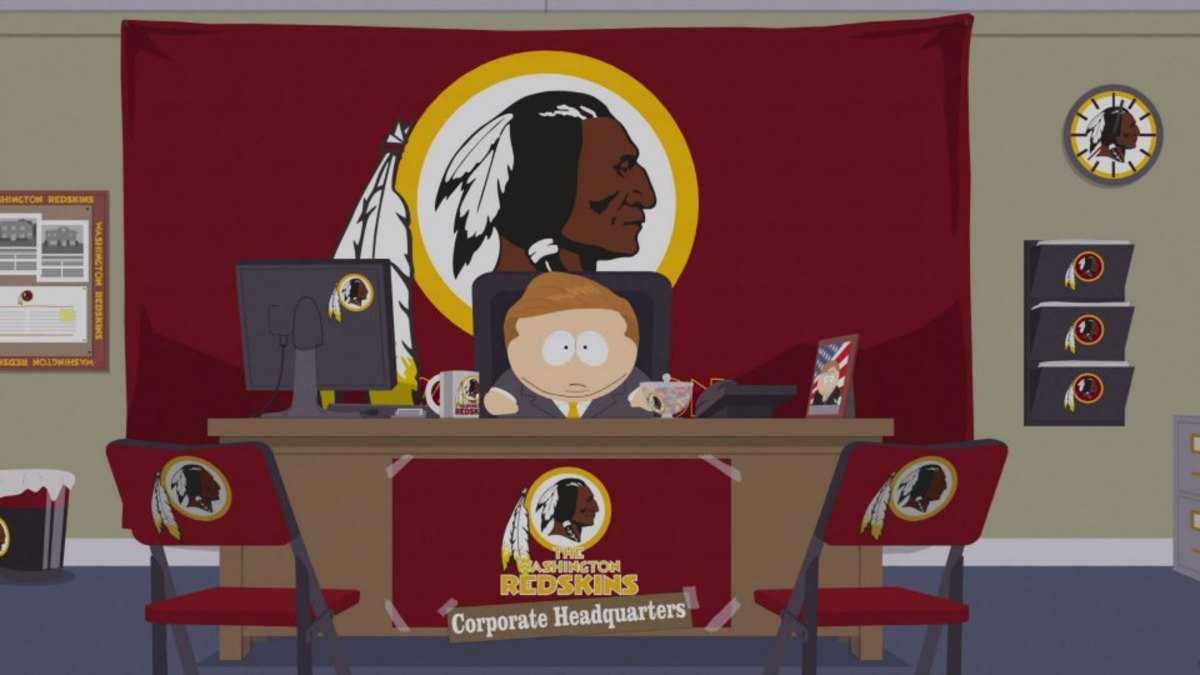https://embed.sendtonews.com/player2/embedcode.php?SC=XKcSbDIs1m-862524-10043&autoplay=on
On July 8th, 2010, Lebron James would become the catalyst for ushering in what would be a new era for the NBA. We as humans mark the beginning and end of eras by coinciding with a significant event. The detonation of the first nuclear weapon in 1945 New Mexico marked the beginning of the Atomic Age. Neil Armstrong cementing his boot prints on the moon signaled the end of the Space Race in 1969. Instead of a nuclear bomb, we have a naive, 25-year-old version of LeBron James. The Decision had James exploding into Miami in such a way that the mushroom cloud from the blast could be seen from Cleveland, Ohio. The beginning of the “player empowerment era” and the “superteam era” is marked by the son Akron, taking his talents to south beach.
When discussing The Decision, there are so many important things to unpack in the story that I can’t fit everything in this article. From the owner of the Cleveland Cavaliers, Dan Gilbert’s temper tantrum of a good-bye. Which had been typed in the comic sans font. We also can’t forget the bombastic “Not 1, not 2, not 3” pep rally-style unveiling of the league’s newest powerhouse. There is a lot to digest with The Decision. But this article is only going to focus on the major events that apply to the “super team era” and “player empowerment era”.

The Dawn of the Superteam Era

Many argue that superteams in the NBA were around before the south beach Big 3. I agree they weren’t the first. When you look back on the history of the NBA, you had numerous superteams you could point to. You have what some call the original Big 3 with Kevin Garnett, Paul Pierce, and Ray Allen in 2007-08. It’s hard to deny the Showtime Lakers of the 80s as a superteam. They had two number one picks in Magic Johnson and James Worthy. Plus a six-time league MVP and the NBA all-time leading scorer in Kareem Abdul-Jabber.
There have been superteams before this Miami Big 3. But what separates this 2010 Miami team is how they were built compared to the other teams. What feels like a common practice in today’s NBA, was at the time a foreign concept. We have never seen three-star players of that caliber all take significant pay cuts to play on the same team. Stuff like that just didn’t happen in the league. It was more common to see NBA lifers like Kobe on the Lakers, Dirk on the Mavs, and Tim Duncan on the Spurs. Nobody can picture all three of those players taking a pay cut to team up in San Antonio. That was such an inconceivable concept at the time.
It was such a radical idea that when Dwyane Wade was taking meetings with the Chicago Bulls in the summer of 2010. Brian Windhorst reported that Wade brought the Big 3 idea to the Bulls front office after being pitched it in an earlier meeting with the Miami Heat. The Bulls thought the idea to be impossible from the start. So they never put any effort into trying to solve the salary cap gymnastics needed to acquire those players.
Players are the new GMs

Pat Riley on the other hand threw every available resource he had into making the Heatles a reality. The Miami Heat mastermind Pat Riley was John F. Kennedy and that Heat roster was his Apollo program. He stripped down the team to its foundation. Clearing up over $50 million in cap space and having only Mario Chalmers as the single paid player on the roster. The Miami Big 3 showed future athletes that they have more control of their future than originally believed.
I have a good inclination that Kevin Durant would have not been so comfortable joining the Warriors if wasn’t for seeing what that 2010 Heat team did. We have players like Kawhi who barely communicate but are comfortable enough to broker backroom deals to demand Paul George. I mean look no further than Anthony Davis. He destroyed his trade value while on the Pelicans by announcing to the basketball world that he isn’t resigning with any team unless it’s the Lakers.
The league has evolved past the superteam era into what is more like a dynamic duo era. With many of the upper echelon teams carrying two superstars. The 2010 Miami Heat team not only proved that it was possible to sign three superstars in one summer. But also that those superstars can decide where these superteams will be built. A new age in how stars control what the name on the front of their jerseys has some of its roots because of The Decision.
The Cost of Cutting Out the Media

When the television spectacle The Decision was originally aired it got hit with a tidal wave of backlash. What LeBron and Maverick Carter wanted to achieve was to cut out the media as a middleman and control the entire production themselves from top to bottom. It was extremely ambitious. Normally when an athlete would make an announcement they would need a reporter with the backing of a media conglomerate. Think of how Michael Jordan had Amhad Rashad as his go-to for breaking interviews. What LeBron was trying to do was circumnavigating needing anyone except the athlete.
The league commissioner at the time, the late David Stern, pleaded with ESPN to cancel the event citing that it would be giving too much power to a lone player. Just the very idea of The Decision disgruntled so many traditional basketball pundits. They scoffed at the notion that LeBron and those working with him could achieve the same quality that professionals of the industry could produce.
People viewed the event as self-indulgent and awkward. The turning of a five-minute ordeal into a 75 minute TV special. Cav fans felt betrayed that the last words King James left them were, “I’m taking my talents to south beach.” These Cleveland fans had to wait in limbo and watch as their hometown hero broke their hearts on national television. He was painted as a villain by fans and the media.
This was something LeBron was not accustomed to. He spoke about how it messed with not only his confidence while playing. But also how it started bleeding into his everyday life. How others perceive us feels like the end of the world to a young adult. Even though the opinions of random people should not matter. When you are younger, the opinion of others is what matters the most. LeBron was no exception to this at 25-years-old.
Growing From Your Decision

LeBron does deserve some of the flak, but you also have to look at the fact that he was only 25-years-old when this happened. People felt that he was pompous for televising it. My argument is if it wasn’t televised then there wouldn’t have been over $2.5 million raised for the Boys & Girls Club through ad revenue. You also have to look at how frustrated LeBron was with the type of support he was getting on the court. The Cavs had just given him a 38-year-old Shaquille O’Neal as the splash of the year. The Decision did a lot of things wrong but it did usher in a new age of basketball with an emphasis on player empowerment.
LeBron learned from his mistakes with making The Decision. When he announced his return to the Cavs in 2014, he partnered with one of the best sportswriters in Lee Jenkins to help craft that letter. He still did it on his terms, but he didn’t do it alone. He has come a long way from stumbling with The Decision to now building a media empire and producing his shows like The Shop. It’s easy for players now to use Twitter to get their message across but LeBron was doing this in a time when Twitter was still in its infancy. He provided the blueprint for how athletes can leverage their star power as a platform for their message.
Final Thoughts
The Decision is an undeniable turning point for the NBA. The league has never been the same since. If you want a better understanding of the present, I feel you must first understand the past. I feel it’s so important to look back at key junctures of history and comb through the details. Some people complain that the NBA players of today’s game are too entitled. They argue that players have too much power and have hijacked control of the team from the owners. Others argue that there has always been a power imbalance and players are just trying to even the playing field. The foundation of the league we have today wouldn’t be there if it wasn’t for what happened on July 8th, 2010. Regardless of where you stand on these arguments, nobody can deny that for the NBA there was life before and after The Decision.
I hope you enjoyed this article and took something from it! I’m a new addition to the Belly Up Sports Network. When you have some time, go give my podcast “The Benchwarmers and Burners” some love! You can follow the show’s Twitter and if you want to check out other great content, go follow Belly Ups Hoops and Belly Up Podcast. I promise you won’t regret it!
Don’t forget to check out the other fantastic articles on the site.






